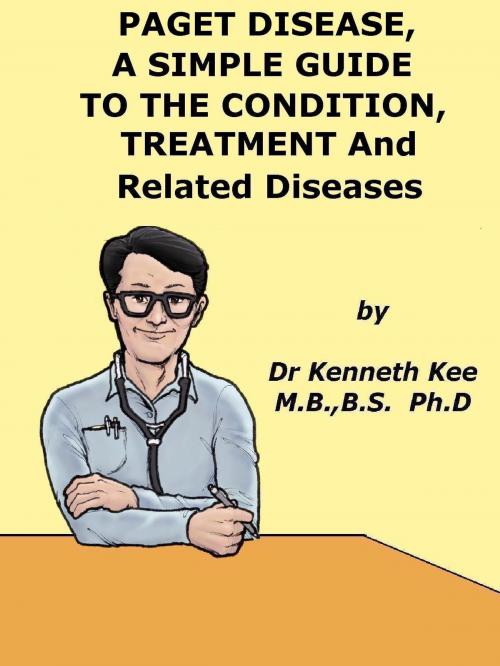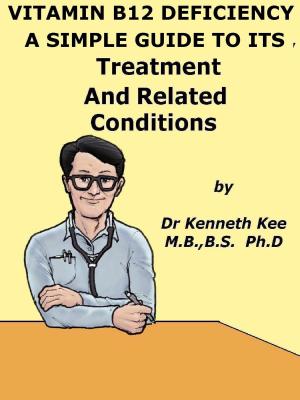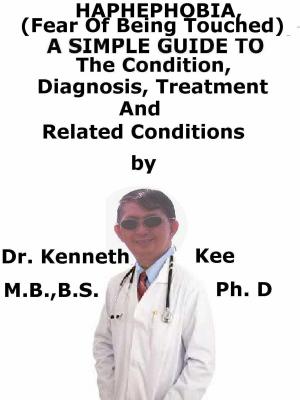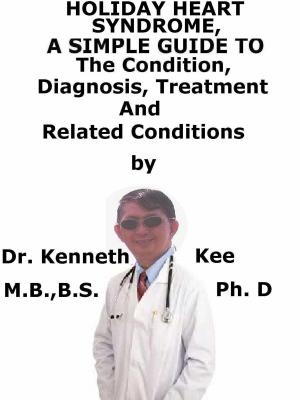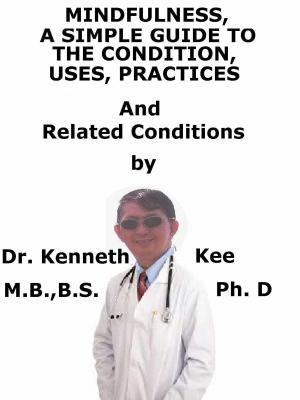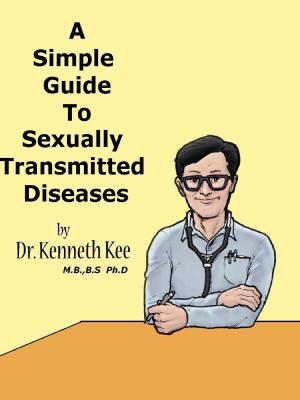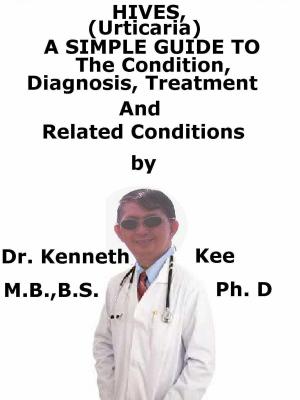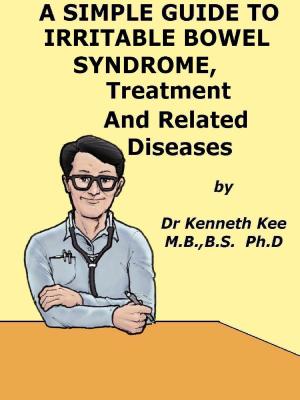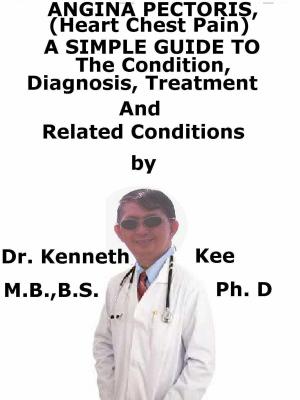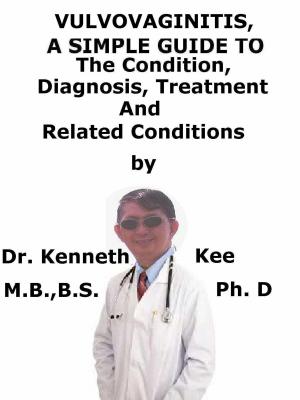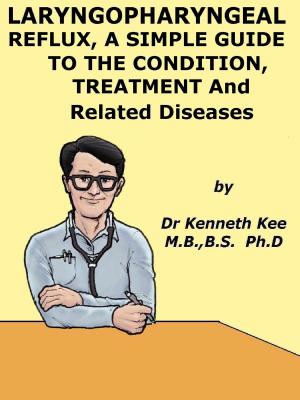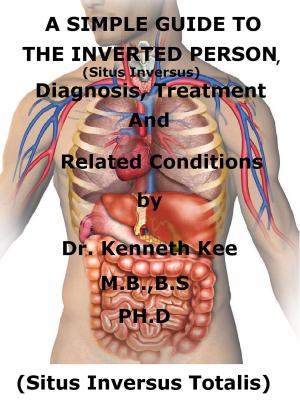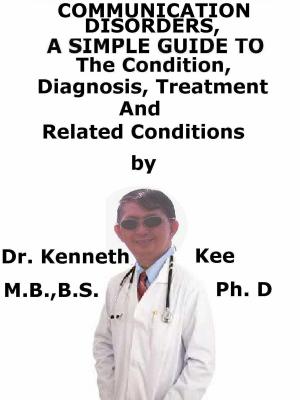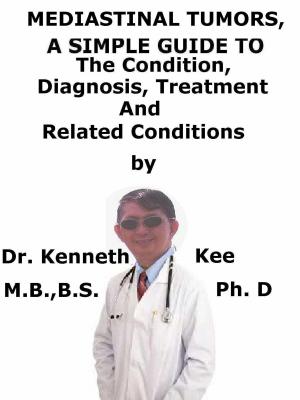Paget Disease of Bone, A Simple Guide to the Condition, Treatment and Related Diseases
Nonfiction, Health & Well Being, Health, Ailments & Diseases, Musculoskeletal, Medical, Specialties, Orthopedics| Author: | Kenneth Kee | ISBN: | 9781310033049 |
| Publisher: | Kenneth Kee | Publication: | December 11, 2014 |
| Imprint: | Smashwords Edition | Language: | English |
| Author: | Kenneth Kee |
| ISBN: | 9781310033049 |
| Publisher: | Kenneth Kee |
| Publication: | December 11, 2014 |
| Imprint: | Smashwords Edition |
| Language: | English |
Paget ’s disease your cause is unknown
You result in enlarged and deformed bones
Cause may be genetics or a virus germ
Men are affected more than women
Disease is chronic and slowly progressive
Any bone can be involved especially the pelvis
There may be pain and dull aches
There may be kyphosis and bowlegs
The early sign is presence of alkaline phosphatase
A bone scan can confirm the diagnosis
Complications are fractures and deformity
Lose weight and maintain joint mobility.
Treatment is with bisphosphonates and calcitonin
Together with exercise build strong bones within
Diet with vitamin D and calcium is important
Surgery may be needed to remove the deformed portion
-An original poem by Kenneth Kee
Interesting Tips about the Paget Disease
A Healthy Lifestyle
1. Take a well Balanced Diet
2. Treatment involves providing physical assistance including:
a. the addition of wedges in the shoe,
b. canes as walking aids and
c. the administration of physical therapy.
Medications that help reduce the pain associated with Paget's include paracetamol and anti-inflammatory drugs such as ibuprofen and naproxen.
In addition, a group of medications called bisphosphonates:
a. Reduce the pain and
b. Help the body regulate the bone-building process to stimulate more normal bone growth.
3. Keep bones and body strong
Bone marrow produces our blood
Eat foods rich in calcium like yogurt, cheese, milk, and dark green vegetables.
Eat foods rich in Vitamin D, like eggs, fatty fish, cereal, and fortified milk.
Eat food rich in Vitamins B and C such as green vegetables and fruits
Zinc and other minerals are important to the body
4. Get enough rest and Sleep
Avoid stress and tension
5. Exercise and stay active.
It is best to do weight-bearing exercise such as walking, jogging, stair climbing, dancing, or lifting weights for 2½ hours a week.
One way to do this is to be active 30 minutes a day at least 5 days a week.
Begin slowly especially if a person has not been active.
6. Do not drink more than 2 alcohol drinks a day for a man or 1 alcohol drink a day for a woman.
Alcohol use also increases the chance of falling and breaking a bone.
Alcohol can affect the bone cells.
7. Stop or do not begin smoking.
It also interferes with blood supply and healing.
Smoking can reduce the blood flow to the bones
Chapter 1
Paget’s Disease of Bone
Paget’s disease is a widespread disease of bones often involving excessive bone resorption and replacement by coarse trabecular bone resulting in abnormal histological patterns and gross deformities.
Paget’s disease is a chronic disorder that can result in enlarged and misshapen bones.
Paget’s disease is caused by the excessive breakdown and formation of bone followed by disorganized bone remodeling.
This causes affected bone to weaken resulting in pain, misshapen bones, fractures and arthritis in the joints near the affected bones.
Often Paget’s disease is localized to only a few bones in the body.
The pelvis, femur and lower lumbar vertebrate are the most commonly affected bones.
Paget’s disease typically is localized affecting just one or a few bones as opposed to osteoporosis for example which usually affects all the bones in the body.
Paget’s disease occurs slightly more often in men than in women (3 to 2).
Paget's disease is rare in people less than 55 years of age.
TABLE OF CONTENT
Introduction
Chapter 1 Paget’s Disease
Chapter 2 Interesting Facts about Paget’s Disease
Chapter 3 FAQs on Paget’s Disease
Chapter 4 Osteoporosis
Chapter 5 Osteomalacia
Chapter 6 Osteogenesis Imperfecta
Paget ’s disease your cause is unknown
You result in enlarged and deformed bones
Cause may be genetics or a virus germ
Men are affected more than women
Disease is chronic and slowly progressive
Any bone can be involved especially the pelvis
There may be pain and dull aches
There may be kyphosis and bowlegs
The early sign is presence of alkaline phosphatase
A bone scan can confirm the diagnosis
Complications are fractures and deformity
Lose weight and maintain joint mobility.
Treatment is with bisphosphonates and calcitonin
Together with exercise build strong bones within
Diet with vitamin D and calcium is important
Surgery may be needed to remove the deformed portion
-An original poem by Kenneth Kee
Interesting Tips about the Paget Disease
A Healthy Lifestyle
1. Take a well Balanced Diet
2. Treatment involves providing physical assistance including:
a. the addition of wedges in the shoe,
b. canes as walking aids and
c. the administration of physical therapy.
Medications that help reduce the pain associated with Paget's include paracetamol and anti-inflammatory drugs such as ibuprofen and naproxen.
In addition, a group of medications called bisphosphonates:
a. Reduce the pain and
b. Help the body regulate the bone-building process to stimulate more normal bone growth.
3. Keep bones and body strong
Bone marrow produces our blood
Eat foods rich in calcium like yogurt, cheese, milk, and dark green vegetables.
Eat foods rich in Vitamin D, like eggs, fatty fish, cereal, and fortified milk.
Eat food rich in Vitamins B and C such as green vegetables and fruits
Zinc and other minerals are important to the body
4. Get enough rest and Sleep
Avoid stress and tension
5. Exercise and stay active.
It is best to do weight-bearing exercise such as walking, jogging, stair climbing, dancing, or lifting weights for 2½ hours a week.
One way to do this is to be active 30 minutes a day at least 5 days a week.
Begin slowly especially if a person has not been active.
6. Do not drink more than 2 alcohol drinks a day for a man or 1 alcohol drink a day for a woman.
Alcohol use also increases the chance of falling and breaking a bone.
Alcohol can affect the bone cells.
7. Stop or do not begin smoking.
It also interferes with blood supply and healing.
Smoking can reduce the blood flow to the bones
Chapter 1
Paget’s Disease of Bone
Paget’s disease is a widespread disease of bones often involving excessive bone resorption and replacement by coarse trabecular bone resulting in abnormal histological patterns and gross deformities.
Paget’s disease is a chronic disorder that can result in enlarged and misshapen bones.
Paget’s disease is caused by the excessive breakdown and formation of bone followed by disorganized bone remodeling.
This causes affected bone to weaken resulting in pain, misshapen bones, fractures and arthritis in the joints near the affected bones.
Often Paget’s disease is localized to only a few bones in the body.
The pelvis, femur and lower lumbar vertebrate are the most commonly affected bones.
Paget’s disease typically is localized affecting just one or a few bones as opposed to osteoporosis for example which usually affects all the bones in the body.
Paget’s disease occurs slightly more often in men than in women (3 to 2).
Paget's disease is rare in people less than 55 years of age.
TABLE OF CONTENT
Introduction
Chapter 1 Paget’s Disease
Chapter 2 Interesting Facts about Paget’s Disease
Chapter 3 FAQs on Paget’s Disease
Chapter 4 Osteoporosis
Chapter 5 Osteomalacia
Chapter 6 Osteogenesis Imperfecta
